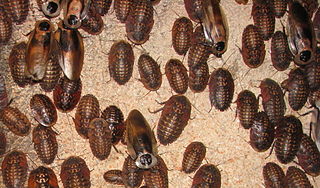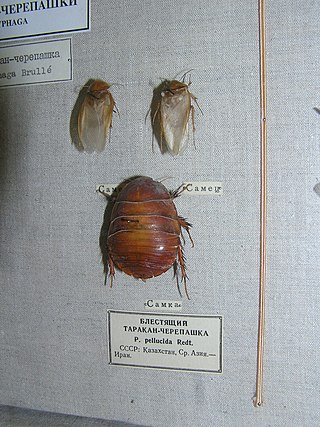
Simón José Antonio de la Santísima Trinidad Bolívar Palacios Ponte y Blanco was a Venezuelan military and political leader who led what are currently the countries of Colombia, Venezuela, Ecuador, Peru, Panama, and Bolivia to independence from the Spanish Empire. He is known colloquially as El Libertador, or the Liberator of America.

Bolívar is a department of Colombia. It was named after one of the original nine states of the United States of Colombia. It is located to the north of the country, extending roughly north–south from the Caribbean coast at Cartagena near the mouth of the Magdalena River, then south along the river to a border with Antioquia Department. The departments of Sucre and Córdoba are located to the west, and Atlántico Department to the north and east. Across the Magdalena River to the east is Magdalena Department. The flag of the department bears a resemblance to the flag of Lithuania.

The Archipelago of San Andrés, Providencia and Santa Catalina, or San Andrés and Providencia, is one of the departments of Colombia, and the only one located geographically in Central America. It consists of two island groups in the Caribbean Sea about 775 km northwest of mainland Colombia, and eight outlying banks and reefs. The largest island of the archipelago and Colombia is called San Andrés and its capital is San Andrés. The other large islands are Providencia and Santa Catalina Islands which lie to the north-east of San Andrés; their capital is Santa Isabel.

Port Bolivar is an unincorporated community located on the northern shore of the western tip of the Bolivar Peninsula, separated from Galveston Island by the entrance to Galveston Bay. The Bolivar Peninsula itself is a census-designated place, in Galveston County, Texas, United States, and part of the Houston–Sugar Land–Baytown metropolitan area. The entire peninsula was severely damaged during Hurricane Ike on September 13, 2008; re-building efforts were still continuing as late as 2013.

Giant cockroaches, or blaberids, are the second-largest cockroach family by number of species. Mostly distributed in warmer climates worldwide, this family is based on the American genus Blaberus, but much of the diversity is also found in Africa and Asia.

Ectobiidae is a family of the order Blattodea (cockroaches). This family contains many of the smaller common household pest cockroaches, among others. They are sometimes called wood cockroaches. A few notable species include:

Corydiidae, previously known as Polyphagidae, is a family of the order Blattodea (cockroaches). Many are known as sand cockroaches. The family is divided into five subfamilies, comprising some 40 genera. One prominent species is the desert cockroach, Arenivaga investigata.

Nocticolidae is a small family in the order Blattodea (cockroaches). It consists of only 32 known species in 9 genera. They are found in Africa, Asia and Australia. Most live in cave habitats, although a few are associated with termites. Cave adapted species are known from the Cenomanian aged Burmese amber, making them the oldest extant cavernicolous organisms.

Luisa Cáceres Díaz de Arismendi was a heroine of the Venezuelan War of Independence.

Cockroaches are insects belonging to the order Blattodea (Blattaria). About 30 cockroach species out of 4,600 are associated with human habitats. Some species are well-known pests.

Periplaneta is a genus of cockroaches containing some of the well-known pest species with cosmopolitan distributions, such as:

Ectobius is a genus of non-cosmopolitan cockroaches once thought native to the Old World and described by Stephens in 1835, belonging to the family Ectobiidae, subfamily Ectobiinae. The discovery of 4 ectobius cockroaches in Colorado dating to 49 million years ago suggests the genus actually originated in North America. This genus has been subject to a number of revisions.

The Pseudophyllodromiinae are a subfamily of cockroaches, in the family Ectobiidae, with a world-wide distribution.

Erucius is a genus of "monkey grasshoppers" in the family Chorotypidae. Species in this genus can be found in Vietnam and Malesia, including the Philippines. It is the only genus in the subfamily Eruciinae.

Attaphila is a genus of cockroaches that live as myrmecophiles in the nests of leaf-cutting ants. They have been suggested to feed on the fungus their host ants farm, or on the cuticular lipids of ant workers. Attaphila are not attacked by host workers because they blend into the colony by mimicking the odour of their hosts ants. Female Attaphila are wingless and males have reduced wings. The cockroaches are phoretic and can disperse to new host colonies by riding on virgin host queens departing on their mating flight and by hitchhiking on leaves carried by leaf-cutter ant foragers returning to their nests, or by following leaf-cutter ant pheromone trails

Oggy Oggy is a French preschool computer-animated television series created by Jean Cayrol and Cédric Guarneri, and produced by Xilam with the participation of France Televisions. It is a spin-off to Oggy and the Cockroaches, based on the character by Jean-Yves Raimbaud and billed as the first French Netflix Original, in terms of animated series. It is released on August 24, 2021.

Bolivar Roads is a natural navigable strait fringed by Bolivar Peninsula and Galveston Island emerging as a landform on the Texas Gulf Coast. The natural waterway inlet has a depth of 45 feet (14 m) with an island to peninsula shoreline width of 1.5 miles (2.4 km).

Polyphaga is a genus of sand cockroaches in the family Corydiidae.
Lobopterella is a genus of cockroaches in the family Ectobiidae.
Dziriblatta is a genus of mostly Palaearctic cockroaches in the subfamily Ectobiinae, erected by Lucien Chopard in 1936. For several decades synonymized with Lobolampra, the genus was returned to valid status by Bohn in 2019, who provides information on its characteristics and differentiation from other genera, with a key to the subgenera. The species distribution includes: North Africa, the Iberian peninsula and associate Atlantic Ocean islands, with probably incomplete locality records to Cyprus and the Middle East.


















